A Bayou Defined: Armand Bayou Nature Center
When I was a child, my family home was along the bayou. None of the neighbors had fences. All the kids played outside investigating the odd creatures that lived in the wild brambles and muddy waters in the channel below. Not until I moved away from the swampy lands of the Gulf Coast, did I realize that the word 'bayou' is a regional term used in Louisiana and Texas.
'Bayuk' is a word from the Native American Choctaw language meaning 'small stream'. Bayous are common natural features of flat, low lying areas like marshes and swamps. Most of the time a bayou is an extremely slow-moving river. These slow streams are minor channels to a larger body of water. My childhood backyard was on the east fork of Vogel Creek and over the years my family and I observed floods, water snakes, snapping turtles, fish spawns, spring wildflowers, autumn grasses, and were lulled to sleep in the summer by the rhythmic calls of the bullfrogs. A recent visit to Armand Bayou Nature Center in southeast Houston filled my heart with a childlike joy at the blooming flowers, budding trees, and the sunbathing reptiles enjoying a warm spring day. (Can you spot the alligator in the headline photo above?)
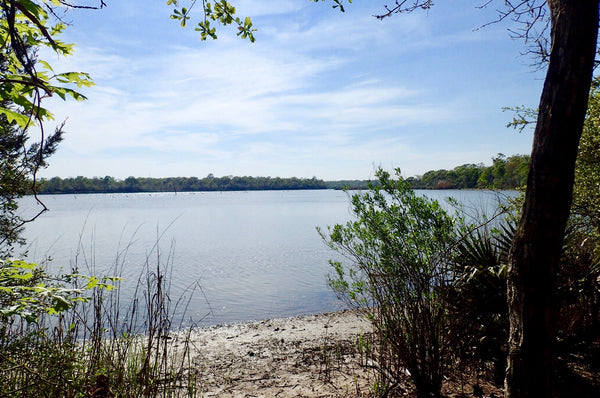
"We urgently need money to build absolutely nothing here," reads a 1972 public service announcement published in Time, Newsweek, and Sports Illustrated to help raise money to match granted government funds to preserve the virgin wilderness surrounding the bayou.
Urban Development and Conservation
During the mid-twentieth century, urban development was accelerating across the United States with few regulations. Many of the protected wild spaces were part of the National Park Service with the regulatory mindset of protecting rural spaces. As the population increased, an unfettered demand for housing and commercial development emerged. Urban areas sprawled into the countryside. During the 1960's farmers, landowners, and conservationists became increasingly interested in the development plans of urban centers.
In the Houston area, the Harris County flood district proposed a water plan that included channelizing or concreting miles of waterways as a means of flood control. Miles of natural settings along the bayous were bulldozed and paved over with hundreds of more miles to be concreted. A group of homeowners along a portion of the bayou created the Bayou Preservation Association to protect the natural beauty of their neighborhoods. As more trees fell, more concerned citizens opposed the flood control district's plan. Armand Yramategui, a native Houstonian and a grassroots conservationist, campaigned for the protection of natural areas. After a birding adventure 20 miles southeast of Houston to the untouched wilderness of the Middle Bayou area, Yramategui recognized the need to protect the beauty and diversity of the bayous from encroaching development and openly opposed the city's water plan.

A concrete channelized White Oak bayou at Stude Park northwest of downtown Houston
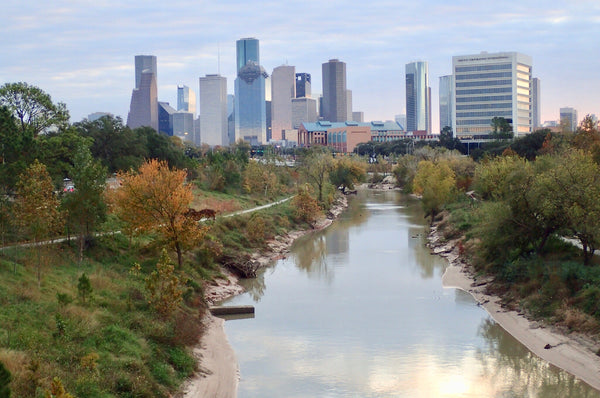
Buffalo Bayou heading east into downtown Houston with a natural shoreline.
The bayous of East Texas and Houston have a unique biological composition that includes wetland zones, riparian woodlands, and native coastal prairie. The convergence of these three ecological zones promotes an extraordinary diversity of species including safe resting habitat for the Central Flyway of the great North American birding migration.

Great Blue Heron fishing in Armand Bayou.
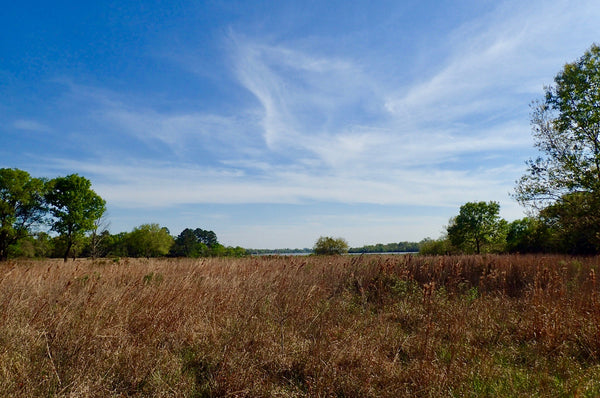
Tall grass coastal prairie along Armand Bayou, only a few native prairie remnants remain in Texas. Do not miss the interpretive prairie trail to learn more about the importance of prairies in nature.
In 1974 after many years of political, environmental, and fundraising campaigns, Armand Bayou Nature Center became one of the largest urban wilderness preserves in the United States. The 2500 acre urban wildlife refuge and wilderness preserve is one of the last bayous in the Houston area that is not channelized and contains original remnants of tall grass prairies, coastal wetlands, and bottomland forest. The preserve is home to more than 370 species of mammals, birds, reptiles and amphibians with 220 species of birds relying on the nature center for a safe resting place. While Cody and I hiked the preserve, we observed an armadillo, an alligator, a snake, many species of birds, turtles, butterflies, insects, and oh so many lovely blooming wildflowers.
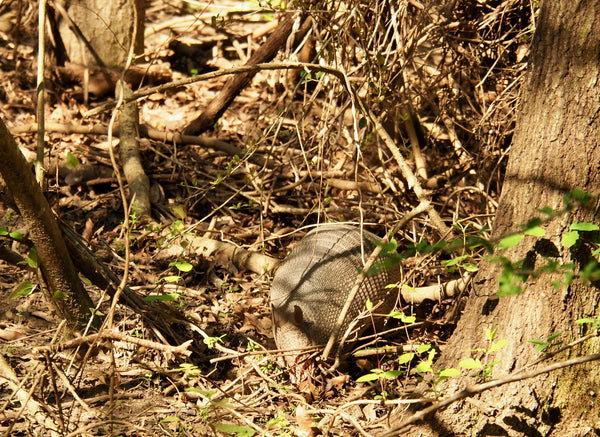
The 9 banded Armadillo rooting for food.

A nonvenomous broad banded water snake enjoying a warm spring day.
Do not worry there are boardwalks over the ponds, bogs, and marsh with spectacular spring blooming spider lilies and wild water iris alongside.
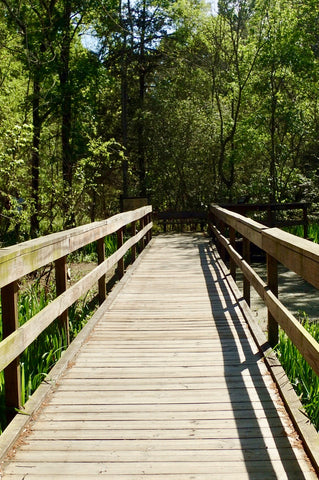
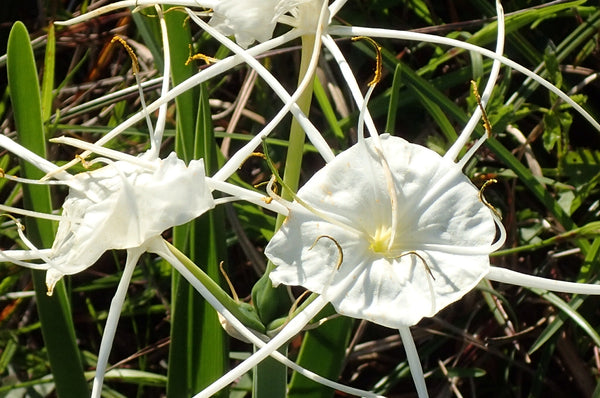
Hymenocallis littorals, Spider lily

Iris virginica, Water Iris
A visit to Armand Bayou and Nature Center is not only a delightful nature adventure in the middle of a bustling city but also an important insight into the history of a native landscape and the power of people to protect the planet from increasing urban and industrial development.
The Nature Center is open Wednesday - Saturday from 9 am - 5 pm and 12 pm - 5 pm on Sunday. Last admission is at 4:00. There is a cost for admission depending on the age of each guest anywhere from 0 - $4. Check the website for hiking maps, guided tours, special events, canoeing or pontoon rides on the bayou. Armand Bayou and Nature Center is open year round and fun for the whole family. Visit http://www.abnc.org

Leave a comment
Please note, comments must be approved before they are published